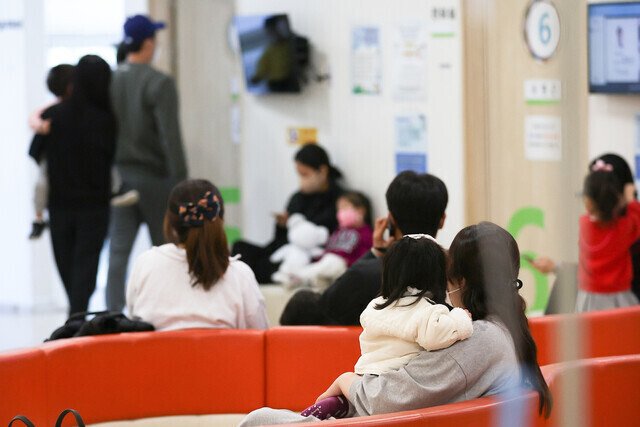뉴스&스피킹(영자신문)
하루 10분이면 영어에 대한 두려움을 극복하고 누구나 유창하게 영어를 구사하실 수 있습니다.
-
 Report: Cuba Cuts Internet, Surveils Journalists There was a time when activists and reporters in Cuba had to speak in code or meet in European embassies to avoid government observation.
Report: Cuba Cuts Internet, Surveils Journalists There was a time when activists and reporters in Cuba had to speak in code or meet in European embassies to avoid government observation.
Now, the internet and encrypted messaging services offers some assistance. But as technology has made private communicating easier, Havana has found ways to interfere with, or block, messages.
Cuba’s independent reporters take care to protect their phones so they do not go into the hands of officials. If government agents seize an individual’s phone, they will search through its data for evidence of wrongdoing.
The Cuban Institute for Freedom of Expression and Press, or ICLEP, says it documented at least 210 incidents of internet restriction cases in the country in 2023.
Those restrictions can include cutting internet access, blocking social media sites, or hacking the accounts of reporters or the media websites they work for, the ICLEP report found.
Normando Hernandez is founder and director general of Miami, Florida-based ICLEP. He said the government tries to “silence independent journalists."
"It is historically well known that the Cuban state listens and spies on all the conversations it wants to," Hernandez said. "Cubans have no way to defend themselves against any breach of their rights."
Reporter Henry Constantin says his internet was cut suddenly after La Hora de Cuba, the media site for which he works, began criticizing the Cuban government.
La Hora de Cuba is published on Facebook and Instagram. Its team of 15 reporters has an audience of between 46,000 and 48,000 on social media.
Constantin says disconnecting journalists’ telephone lines or internet access is designed to limit free speech. Hernandez said the government controls all access to digital expression.
Havana controls the Cuban telecommunications company ETECSA, which controls all digital communications on the island.
Access to the network for users represents both a threat to Havana and an instrument of control for officials. But with that control, said Hernandez, officials can easily "cut communication in general at historically important moments … or when something is happening in the island of interest to Cuban society."
That appears to be the case with Constantin.
In 2021, he was detained for 10 days for public disorder after reporting on demonstrations against the government over food shortages and medicinal problems.
ICLEP has documented digital harassment since 2016.
In 2021, the activity was especially strong. ICLEP documented 1,129 violations of freedom of expression that year. During that year, protests against the Cuban government and Communist Party were the biggest since the 1959 revolution.
Prisoners Defenders International is a Spain-based human rights group. It said Cuba’s government has been spying on reporters and activists for many years. Javier Larrondo is president of Prisoners Defenders. He said the government monitors text messages for “sensitive words.”
Using encrypted services like WhatsApp or Telegram is not always enough. When reporters or opposition activists are arrested, their phones are always seized and the memory inspected by experts.
"As such, it is essential never to go out with a mobile phone but to leave it at home, hidden." Or to go out with a second phone without memory, he said.
I’m Dan Novak.View -
 South Korea’s Fertility Rate Falls Again as Women Worry about Jobs South Korea’s fertility rate, which already is the world’s lowest, dropped again in 2023.
South Korea’s Fertility Rate Falls Again as Women Worry about Jobs South Korea’s fertility rate, which already is the world’s lowest, dropped again in 2023.
This means that the number of babies a South Korean woman is expected to have during her reproductive years dropped from 0.78 in 2022 to 0.72 in 2023.
Concerns about missing out on long-term jobs and the cost of raising a child are reasons given for the low rate.
The fertility number is much lower than the rate of 2.1 per woman that would be needed to keep South Korea’s population stable.
In 2015, when the cost of housing and education were lower, the rate was 1.24. That means South Korea’s population has been shrinking for a long time.
The South Korean government is trying to encourage men and women to start families. Since 2018, the nation has been the only member of a group of large economies to have a rate below one. The Organisation for Economic Co-Operation and Development (OECD) includes a wide group of nations such as Britain, the United States, Australia, New Zealand as well as Mexico and Chile.
Among OECD nations, South Korea has the largest difference in pay between men and women. Balancing motherhood with a job is a concern for South Korean women.
Jung Jae-hoon is a professor at Seoul Women's University. Jung noted that women have trouble moving their careers forward after taking leave to care for children.
An example of this is Gwak Tae-hee who is 34. She is concerned about missing career opportunities if she stops working to start a family. She has been married for three years and works as a manager for a company that makes milk products.
"Having a baby is on my list, but there's windows for promotions and I don't want to be passed over," she said.
Gwak said she considered starting medical treatments last year that would help her have a child. However, she decided against it because she wanted to take on work projects that would help her career.
“I hope it's not too late when I try next year or the year after," Gwak said.
If the birth rate continues to drop, South Korea’s population of about 51 million will be cut in half by 2100.
In Seoul, the largest city and capital, the fertility rate is only 0.55.
The nation has an election in April, and politicians have been offering ideas to make it easier for young adults to consider having children. The ideas include more housing and financial support for people thinking of having a family.
An official at Statistics Korea said there are some people who are a couple but do not get married. In South Korea, many people see marriage as a requirement to have children, so that reduces the number of babies. But the official told Reuters that right now the group is centering its work on trying to help married people feel better about starting families.
Politicians are worried that additional social spending has not encouraged more families. Since 2006, the government has spent about $270 billion in areas such as helping families pay for childcare, but the fertility numbers are still falling.
South Korea, however, is not the only nation concerned about falling birth rates. China and Japan also recorded all-time low rates in 2022.
I’m Dan Friedell.View -
 What Would Happen without Leap Day? This year, 2024, is a leap year. February 29 is known as “leap day.” But what is behind this rare extra day on the calendar?
What Would Happen without Leap Day? This year, 2024, is a leap year. February 29 is known as “leap day.” But what is behind this rare extra day on the calendar?
Everyone knows the Earth takes 365 days to travel around the sun. Well, that is not exactly correct. The Earth really takes 365 days, five hours, forty-eight minutes and forty-six seconds to complete its orbit around the sun.
So, almost every four years an extra day occurs and it is represented on the calendar.
The Jet Propulsion Laboratory at the California Institute of Technology says the extra day is used to be sure the months stay connected to yearly events such as equinoxes and solstices.
NASA says that over time, our seasons would fall out of order without the leap day. Each calendar year is about six hours longer than 365 days.
However, a leap day is not added every four years. That would lengthen the calendar by 44 minutes, say experts at the National Air and Space Museum in Washington, D.C. Over time, that would mean summer would arrive in November, said Younas Khan, a physics instructor at the University of Alabama, Birmingham.
So a leap day is added nearly every four years, but not in years including 1700, 1800 and 1900. There was a leap day in 2000 because it was a year divisible by both 100 and 400. Over the next 500 years, there will be no leap day in 2100, 2200, 2300 and 2500.
There will be leap days in 2028, 2032 and 2036.
Without a leap day, farmers might have trouble planting in the correct season, Khan said. “Christmas would be in summer. There will be no snow. There will be no feeling of Christmas,” he said.
You might wonder who came up with the idea of leap day. Experts say the calendar change developed over time.
Ancient civilizations planned their years based on either the moon or the sun. By the time Julius Caesar controlled the Roman Empire, things had gotten more complicated. People had written down the calendars but seasons were “drifting.” For example, the weather in July was not always the same. So in that time, they added months to the calendar. But that did not really fix the problem.
The Romans fixed the problem in the year 46 BCE. The year became 365-and-one-fourth days long. So an extra day was added every four years. The Romans came close, but a year is actually 365 plus 0.242 days, says Nick Eakes, an astronomy professor at the University of North Carolina in Chapel Hill.
There have been multiple calendars used by western societies. The Athenian and the Julian calendars were used thousands of years ago. The Athenian calendar, however, ran into problems when holidays were not falling in the correct seasons, said Thomas Palaima, a classics professor at the University of Texas at Austin.
Over time, the current calendar also changed because of holidays. The leader of the Roman Catholic Church, Gregory XIII, fixed the calendar again in the late 1500s. He wanted to be sure the Christian holiday of Easter happened in early spring. So Gregory and his advisors did the difficult math to come up with something very close to the calendar we use today.
“If the solar year was a perfect 365.25 then we wouldn’t have to worry about the tricky math involved,” said Eakes, the astronomy professor.
Special birthdays
After the calendar, the main concern for leap day centers on those born on that day, February 29. It only comes around once every four years (for the most part.)
It is a conversation starter for many. It can be an administrative headache – some people must fill out official documents and say their birthday is either February 28 or March 1. Some computer systems have not yet been updated to include February 29 as a choice.
Only about 5 million of the 8 billion people worldwide were born on February 29. Shelly Dean of Seattle, Washington is one of them. Growing up, she said, she had normal birthday parties each year, but every fourth year, she had a special party.
She is now 23, but has not had too many “special” birthdays. So this year, she is planning one. She missed celebrating with her family four years ago, because she was attending school in New York. So on Thursday, she gets to celebrate her special day for the first time in eight years with her family.
“It’s a very big day,” she said.
I’m Dan Friedell.View -
 How to Use AI Tools to Improve Quality of Internet Searches Internet search companies have already built artificial intelligence (AI) tools into their systems. And the use of AI systems to support internet searches is expected to grow sharply in coming years.
How to Use AI Tools to Improve Quality of Internet Searches Internet search companies have already built artificial intelligence (AI) tools into their systems. And the use of AI systems to support internet searches is expected to grow sharply in coming years.
Some technology experts feel this change can greatly improve the overall search experience for users. But experts also have concerns.
One early user, or adopter, of AI search is Google. The American-based company’s search engine currently processes an estimated 80 percent of the world’s internet search requests.
Microsoft’s search engine Bing also includes AI-powered results. Bing’s AI system is linked to the company’s Copilot service. Copilot is an AI tool designed to operate across a series of Microsoft business products.
Copilot is based on OpenAI’s ChatGPT, which launched in late 2022. ChatGPT is a computer-powered AI tool designed to interact smoothly with humans.
Such AI tools – known as “chatbots” or “generative AI” – are trained on massive amounts of internet data. They have shown an ability to perform human-level writing and create high-quality images and videos based on short, written descriptions.
But these AI systems have also demonstrated possible risks. One risk is the tools can present false or misleading information as truth. They can also produce results that represent long-standing biases against minorities or underrepresented communities.
Here, we offer some guidance for users seeking new systems to provide improved and relevant search results.
Where do I find AI search tools?
Some major search companies have made it easy to find AI search engines on their main search pages.
Google’s search system is powered by its own chatbot tool, called Gemini. It can easily be found directly on desktop or mobile phone browsers. Gemini can be used to perform other chatbot actions as well as providing search assistance.
Google also has been testing a new search offering, called “Search Generative Experience.” It replaces links with AI-produced briefs containing basic facts about a subject. This system is currently limited to U.S. users who sign up through Google’s experimental Labs site.
To use AI with Microsoft’s Bing search engine, simply click the Chat or Copilot button underneath the main search window. This should pull up an information box where users can enter their search requests.
New AI search sites have also launched. But they are not as easy to find. The Associated Press reports one way to find them is to perform searches for tools on Copilot or Gemini. Some to look out for include Perplexity, HuggingChat, You.com, Komo, Andi, Phind, Exa and AskAI.
Do I have to sign up for or pay for these services?
Most of these services have free versions. But generally, there are limits on how many searches a user can make. Users can also upgrade from basic services to higher levels providing smarter AI tools and more search possibilities.
Gemini users, for example, can pay $20 for an upgraded version that offers its “most capable” model, called Ultra 1.0.
Most of the startup sites are largely free to use and don't require setting up an account. Many also have upgrade possibilities.
What are the results like?
Unlike a traditional Google search, results from AI tools usually produce a longer, readable collection of information. Sometimes, the original source of information is also included. And in some cases, messages are included to warn users about possible misinformation appearing in the results.
It is a good idea to try out different AI tools. Results from each can differ, sometimes wildly. The AP reports that results from AI-assisted search tools can be especially useful when searching for more obscure facts or information.
I’m Bryan Lynn.View -
 Large Study Details Years of Brain Changes in Alzheimer’s Patients A long-term study in China has shown that a series of changes take place in the brains of people who get Alzheimer’s disease long before they present signs of the sickness.
Large Study Details Years of Brain Changes in Alzheimer’s Patients A long-term study in China has shown that a series of changes take place in the brains of people who get Alzheimer’s disease long before they present signs of the sickness.
The large study followed middle-aged and older adults for 20 years. The individuals were examined on a regular basis during that period. The researchers used brain imaging, spinal fluid checks and other tools to collect data.
The researchers reported that the study subjects who later developed Alzheimer’s showed high levels of disease-linked protein in their spinal fluid. The higher levels were recorded as much as 18 years before the patients were identified as having Alzheimer's.
Then every few years, the study detected another so-called biomarker of coming trouble.
Scientists still do not know exactly how Alzheimer’s forms. The disease slowly destroys the brain, interfering with the ability to think. Alzheimer’s patients develop proteins called beta-amyloid and tau, which over time build up into plaques that block brain processes.
The new research, published in the New England Journal of Medicine, offers a timeline for how these proteins develop.
The study’s importance “cannot be overstated,” said Dr. Richard Mayeux, an Alzheimer’s specialist at Columbia University who was not involved in the research.
“Knowledge of the timing of these physiological events is critical” for testing new ways of treating and maybe even preventing Alzheimer’s, he wrote in a piece published alongside the study report.
Scientists already knew that in rare, genetic forms of Alzheimer’s that affect young people, a poisonous form of amyloid starts developing about 20 years ahead of symptoms. At some point after that, tau develops as well.
The new findings show the order of such biomarker changes common to age-related Alzheimer’s.
Researchers with Beijing’s Innovation Center for Neurological Disorders compared 648 people who were later found with Alzheimer’s to an equal number who remained healthy. The amyloid finding in future Alzheimer’s patients was the main discovery.
Differences in tau were found next, followed by a marker of trouble in how neurons communicate. A few years after that, the study found differences in brain shrinkage and cognitive test scores between the two groups.
“The more we know about viable Alzheimer’s treatment targets and when to address them, the better and faster we will be able to develop new therapies and preventions,” said Claire Sexton, director of scientific programs with the Alzheimer’s Association. She noted that blood tests are coming soon that promise to also help by making it easier to find amyloid and tau.
More than 6 million Americans, and millions more worldwide, have Alzheimer’s. There is no cure.
But last year, Leqembi became the first approved drug that could slow the worsening of early Alzheimer’s for a few months. The drug works by clearing away some of the amyloid protein. Other drugs are being developed to target tau.
I'm Caty Weaver.View

